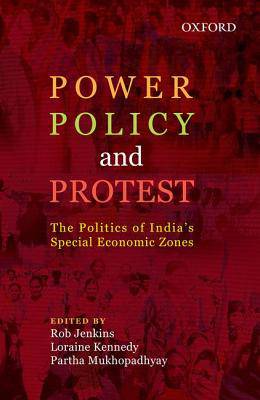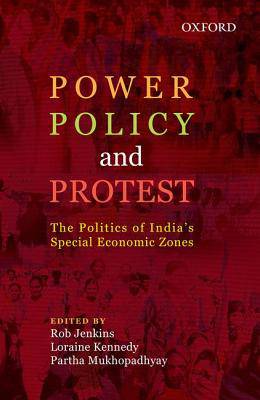
- Afhalen na 1 uur in een winkel met voorraad
- Gratis thuislevering in België vanaf € 30
- Ruim aanbod met 7 miljoen producten
- Afhalen na 1 uur in een winkel met voorraad
- Gratis thuislevering in België vanaf € 30
- Ruim aanbod met 7 miljoen producten
Zoeken
Power, Policy, and Protest
The Politics of India's Special Economic Zones
Rob Jenkins, Loraine Kennedy, Partha Mukhopadhyay
Hardcover | Engels
€ 96,95
+ 193 punten
Omschrijving
India's attempt to spur growth, boost exports, and create jobs by establishing Special Economic Zones (SEZs) is a paradox: the policy represents an intensification of the country's increasingly market-oriented development paradigm, but implementation has required active government involvement. More than a decade after importing the SEZ concept from China, India has hundreds of these walled-off, deregulated, low-tax enclaves. But an industrialization strategy pioneered in authoritarian China has faced huge political resistance in democratic India. Protest movements arose in many localities where SEZs were proposed. Resistance varied in terms of the intensity and sustainability of opposition, the grievances articulated, and the tactics employed. A central issue has been the alienation of privately owned land by business interests, abetted by the state. To date, no systematic study of the politics of India's SEZ experiment has been undertaken. This book remedies this gap, examining variations within and between eleven states. Detailed case studies investigate differences in the nature and extent of SEZ-related political mobilization and the means employed by governments to manage dissent. By covering a broad range of regional contexts, industrial sectors, and political conditions, this volume furnishes a comprehensive picture of the politics surrounding one of India's most controversial reform measures.
Specificaties
Betrokkenen
- Auteur(s):
- Uitgeverij:
Inhoud
- Aantal bladzijden:
- 384
- Taal:
- Engels
Eigenschappen
- Productcode (EAN):
- 9780198097341
- Verschijningsdatum:
- 20/04/2014
- Uitvoering:
- Hardcover
- Formaat:
- Genaaid
- Afmetingen:
- 142 mm x 218 mm
- Gewicht:
- 557 g

Alleen bij Standaard Boekhandel
+ 193 punten op je klantenkaart van Standaard Boekhandel
Beoordelingen
We publiceren alleen reviews die voldoen aan de voorwaarden voor reviews. Bekijk onze voorwaarden voor reviews.








